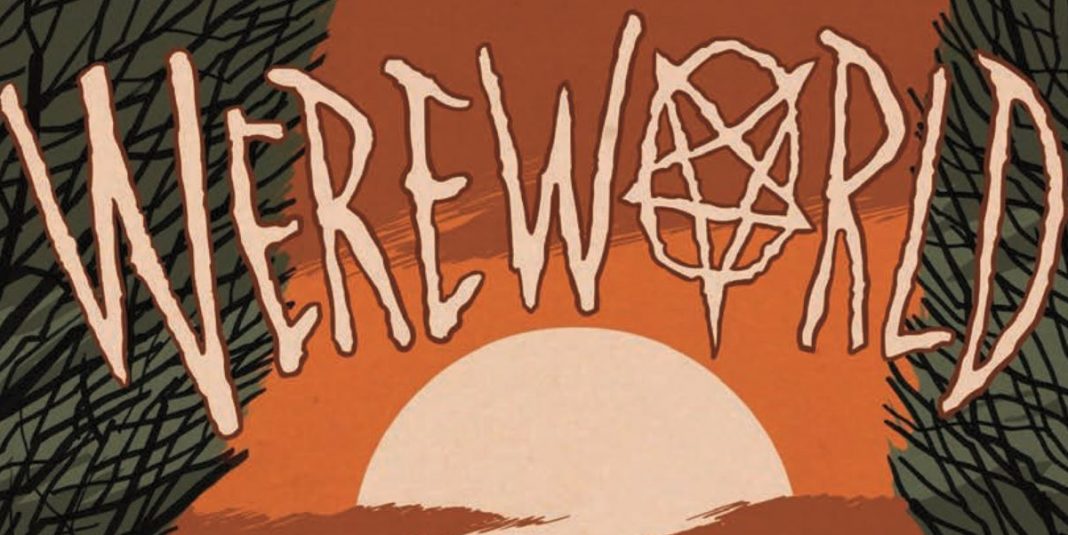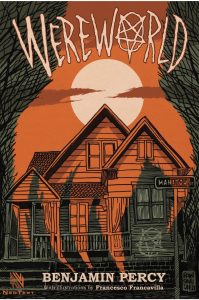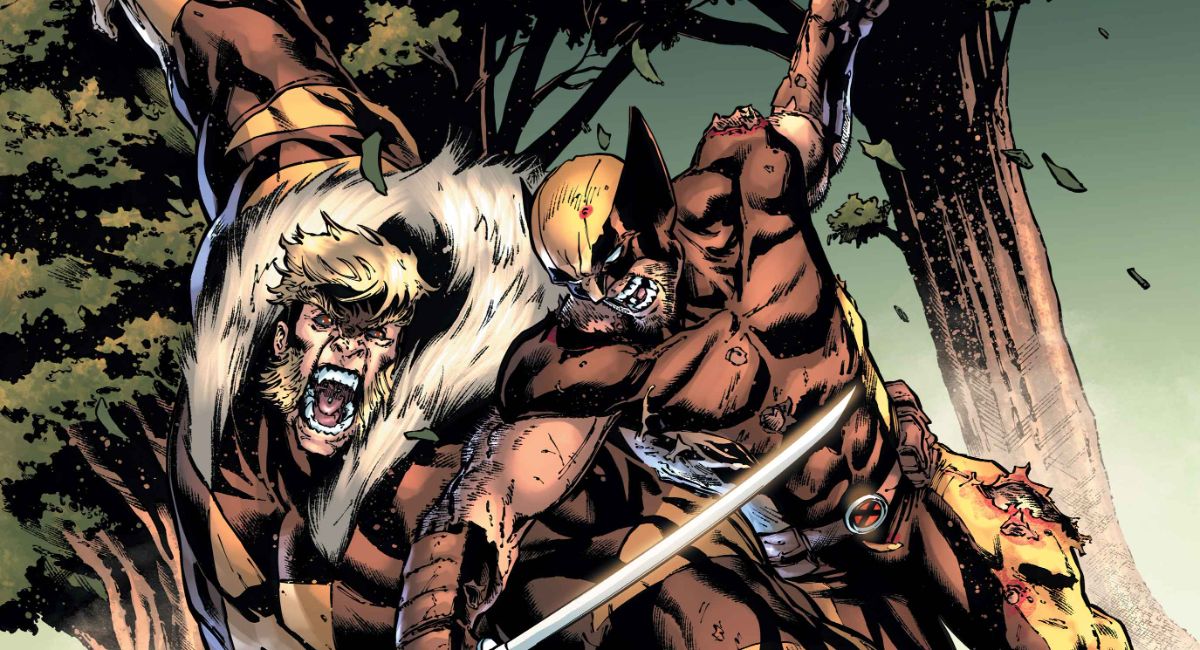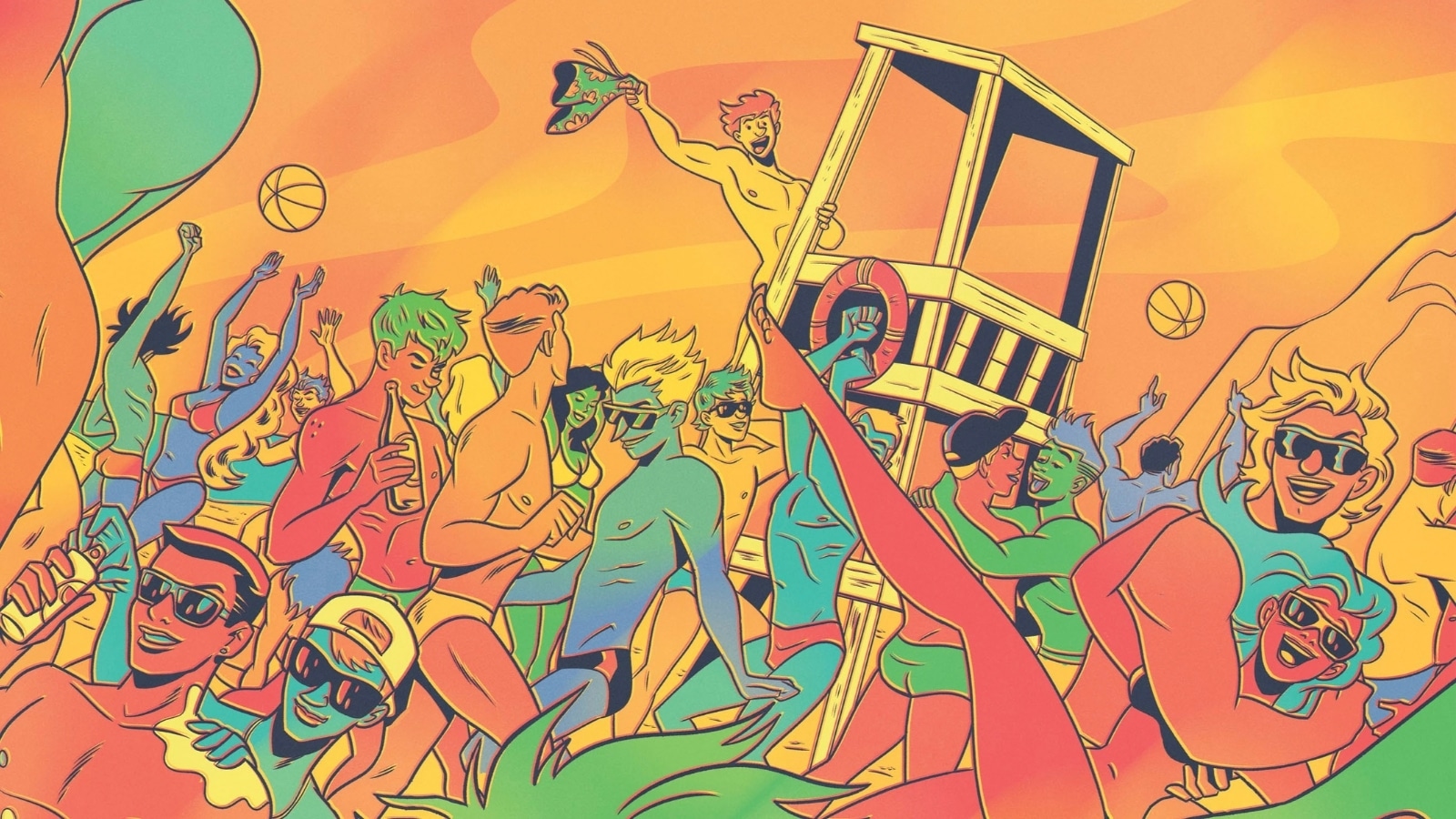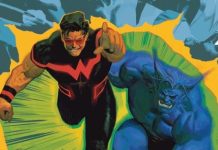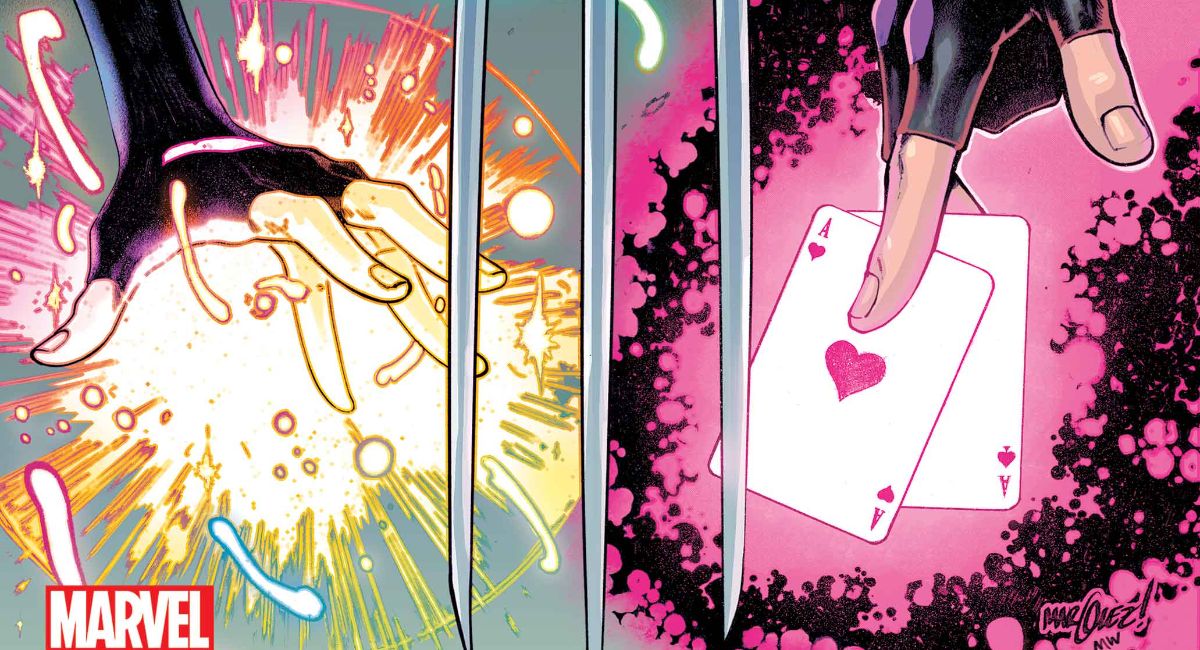For quite a long time, zombies were the ultimate metaphor for humanity’s violent tendencies, and they packed quite a punch. Mindless consumerism, highly contagious mob mentalities, and predatory capitalism were all things zombies carried quite well on their shambling bodies throughout the 1960s all the way to the early 2000s.
Our times, though, where deteriorating social structures and highly infectious viruses dominate the political landscape, might require a more brutal and more subversive monster. Writer Benjamin Percy has found just that, and it is a violently convincing one: the werewolf. In his new novella, Wereworld, Percy makes a frightening but solid argument as to why these snarling and indiscriminately sadistic creatures are the monsters of our time.
Wereworld is an urgent horror story about, essentially, a pandemic of werewolves. I use the word pandemic with every ounce of meaning the current divide between the vaccinated and the willingly unvaccinated has acquired in the past year. A mysterious virus seems to be creating werewolves and the method through which people get infected is unclear. A man in a small town watches as the wolf virus makes its way towards his community to rip it apart, both figuratively and literally. Cue the misinformation, the denial, and the fear, all things that are now part of our new normal.
Percy weaves a tale in the tradition of Stephen King’s Cycle of the Werewolf (1983) in which small town politics proves to be as vicious and monstrous as the things that come out on the full moon.
Like Cycle of the Werewolf, Wereworld features full color illustrations between chapters. Francesco Francavilla lends his signature inks, along with his orange and red-heavy art style, to these pages, adding a richness to the textures already set within the story to better flesh out its world. Like Bernie Wrightson before him, Francavilla knows how to extract the horror already present in each chapter while leaving just enough room for readers to fill in the more obscure parts of the story with their own dark imagination.
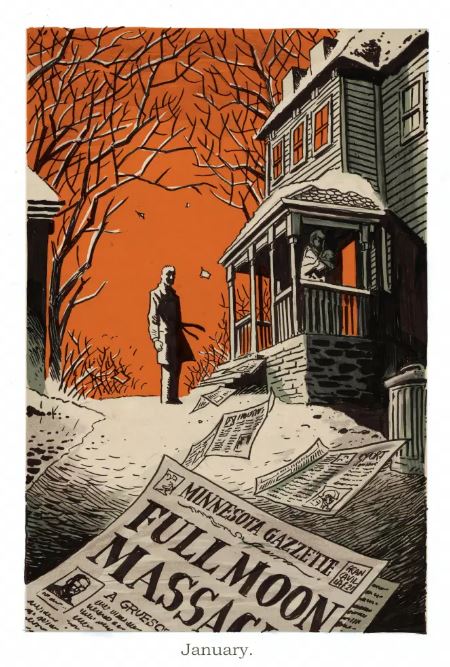
The Beat corresponded with Benjamin Percy to talk werewolves, the pandemic, and giving classic monsters something new to say about us. It follows below.
RICARDO SERRANO: Wereworld feels like a horror story that’s very much about distance, about how we let paranoia, fear, and alleged threats push us further away from each other. There are definitely some very direct references to the COVID pandemic in the story that tie in to this, for instance. What were you trying to capture or tap into with this novella?
BENJAMIN PERCY: Speculative stories often channel cultural unsease. We live in a time of fear and paranoia. I was tapping into that when I wrote Wereworld. A contagion is spreading, and nobody knows the truth of what’s coming. As a result, people are driven apart; because no one is certain how the infection spreads, anyone could be an enemy. A colleague, a neighbor, even a family member.
I gave the myth of the werewolf an analogue to the pandemic. Because it always occurred to me, when watching films like An American Werewolf in London or reading novels like The Wolf’s Hour, that there was something inauthentic about how contained they were. If a werewolf was on the loose, there wouldn’t be one, but many. An ever-expanding pack. Exponential growth. They are, after all, rage and hunger machines.
As the title implies, I’m writing about a planetary crisis, but I chose to steadily narrow the focus. To one town, one street, one house. A family is in crisis, and they’re going to have to conquer their inner demons if they’re going to survive the monsters at their doorstep.
SERRANO: The illustrations by Francesco Francavilla, which reminded me a bit (in terms of implementation) of Bernie Wrightson’s in the Stephen King book Cycle of the Werewolf, offer these snapshots into the world you created and do a great job of conveying the violence in it. How did you approach image selection and how much they would reveal?
PERCY: He’s a brilliant artist — who I’ve been in love with ever since I read his collaboration with Scott Snyder in Detective Comics, about a decade ago now — so I’m thrilled to call him a partner in crime. We talked about Bernie Wrightson and Stephen King, yes. We also talked about EC Comics as a general vibe.
He asked me to throw out three or four ideas for every month of the calendar (the story is broken up into twelve chapters, a year in the life of a small town). And I did so, but I also told him to completely ignore them all, because his vision is best. He read the story. Then he considered the suggestions. Then we got into a generative conversation. His illustrations are all pitch perfect — they show just enough. Because horror exists in the shadows. Sometimes implication is more electrifying than a direct revelation.
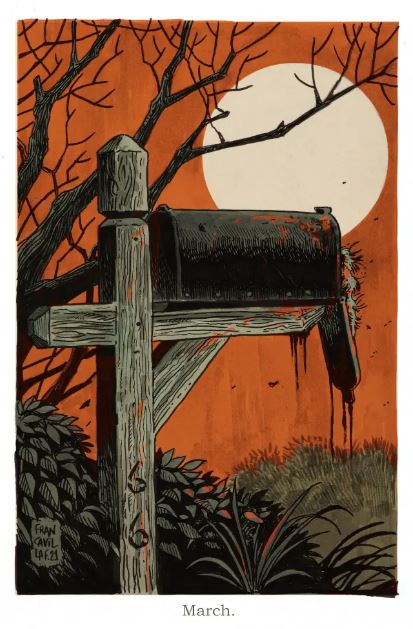
SERRANO: As a writer, you have a body of work that sometimes includes adding new twists to tried and true horror genres. I’m thinking about your zombie comic Year Zero and how its narrative unfolds. Were you tinkering with the idea of werewolves for a while or did all just click all of a sudden as you saw what was going on all around us?
PERCY: Werewolves have always been my favorite monster…because, as Angela Carter once wrote, we’re all hairy on the inside.
I have an artifact from sixth grade — a “research” paper titled “WEREWOLVES!” (yes, with an exclamation mark) — in which I detailed the history of lycanthropy and even performed a ceremony to become one (spoiler alert: it worked!).
My breakout novel — Red Moon, which released in 2013 — is about werewolves.
And I’ve been…missing them. Wereworld has been in my brain for a long time. It’s kind of like a weird blend of The Purge, American Beauty, and Contagion, as the veneer of civilization clashes against an encroaching wildness.
SERRANO: Did you take any elements from other werewolf movies, books, video games, or comics as you put together your story?
PERCY: Cycle of the Werewolf is an obvious influence, as we arranged the story into twelve chapters, each with its own singular illustration.
I’m also tipping my hat in part to Ginger Snaps, in that the onset of puberty in the daughter is tied to themes of transformation.
SERRANO: Any other classic monster you’re looking to dive into for a unique take on it?
PERCY: I have a Frankenstein concept (already fleshed out) that I would love to write. I’ve been sitting on it more than a decade (if only there was enough time).
Wereworld is available now digitally on the NeoText website.


